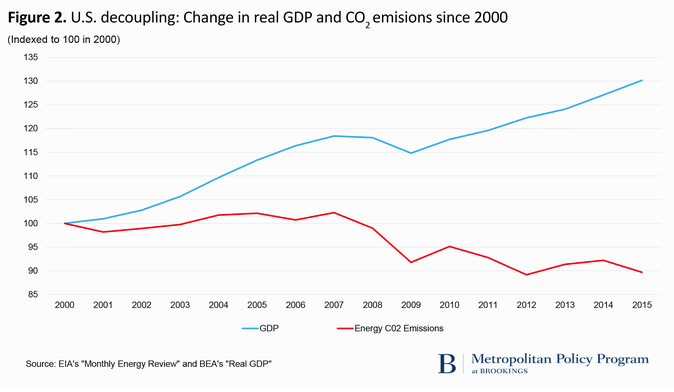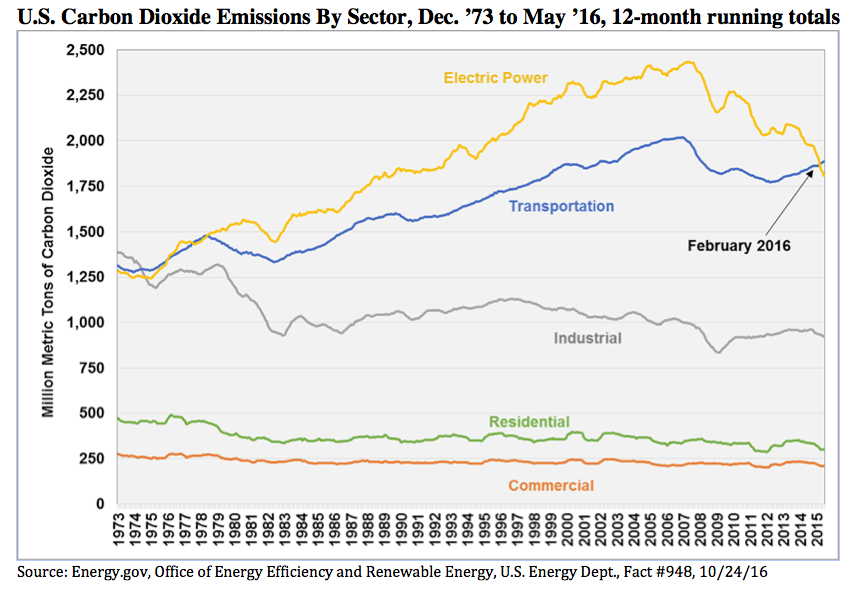With new data from the U.S. Energy Information Administration, I have updated the charts from my report last year on “The Market Forces Behind North Carolina’s Falling Emissions“:
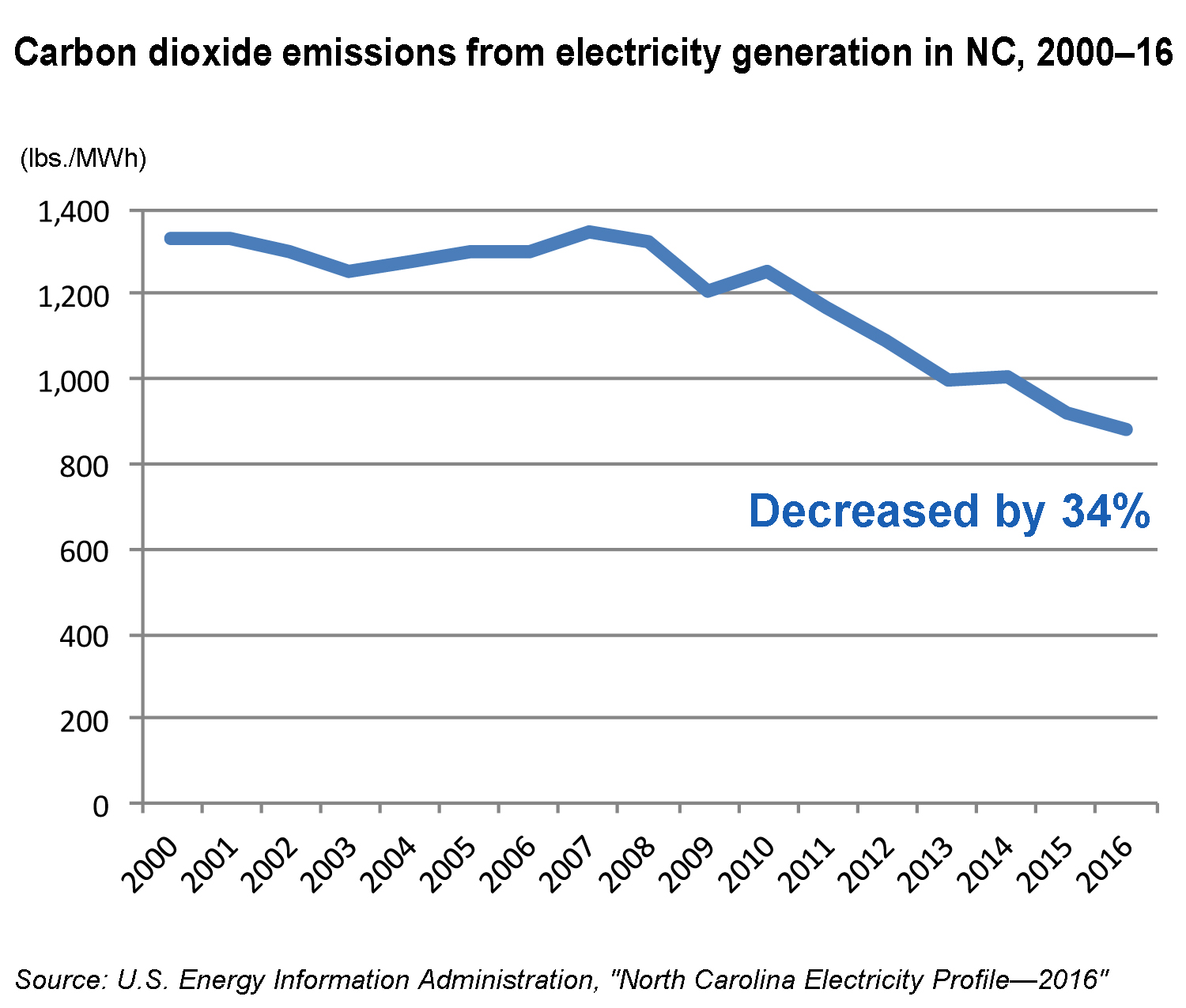
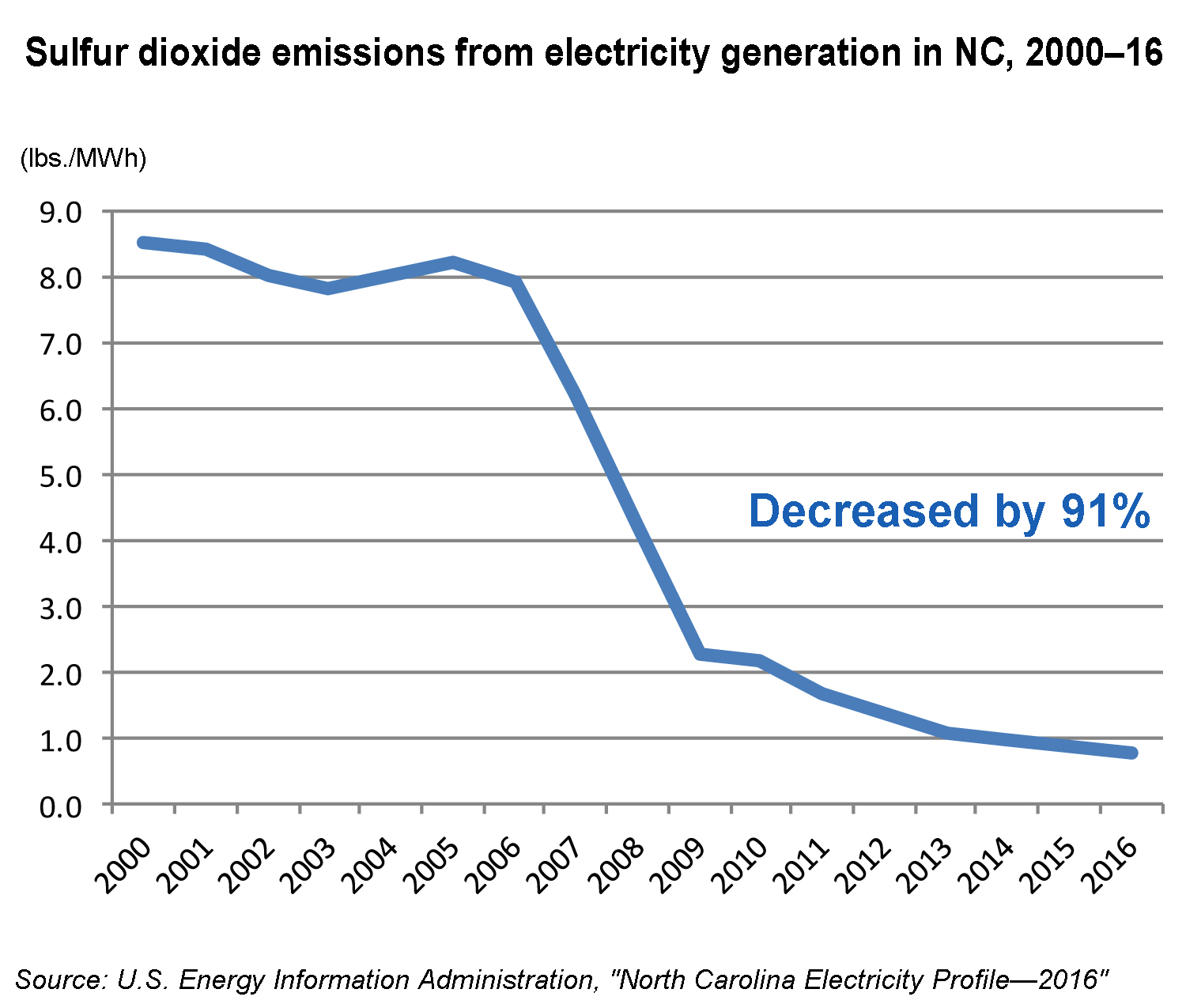
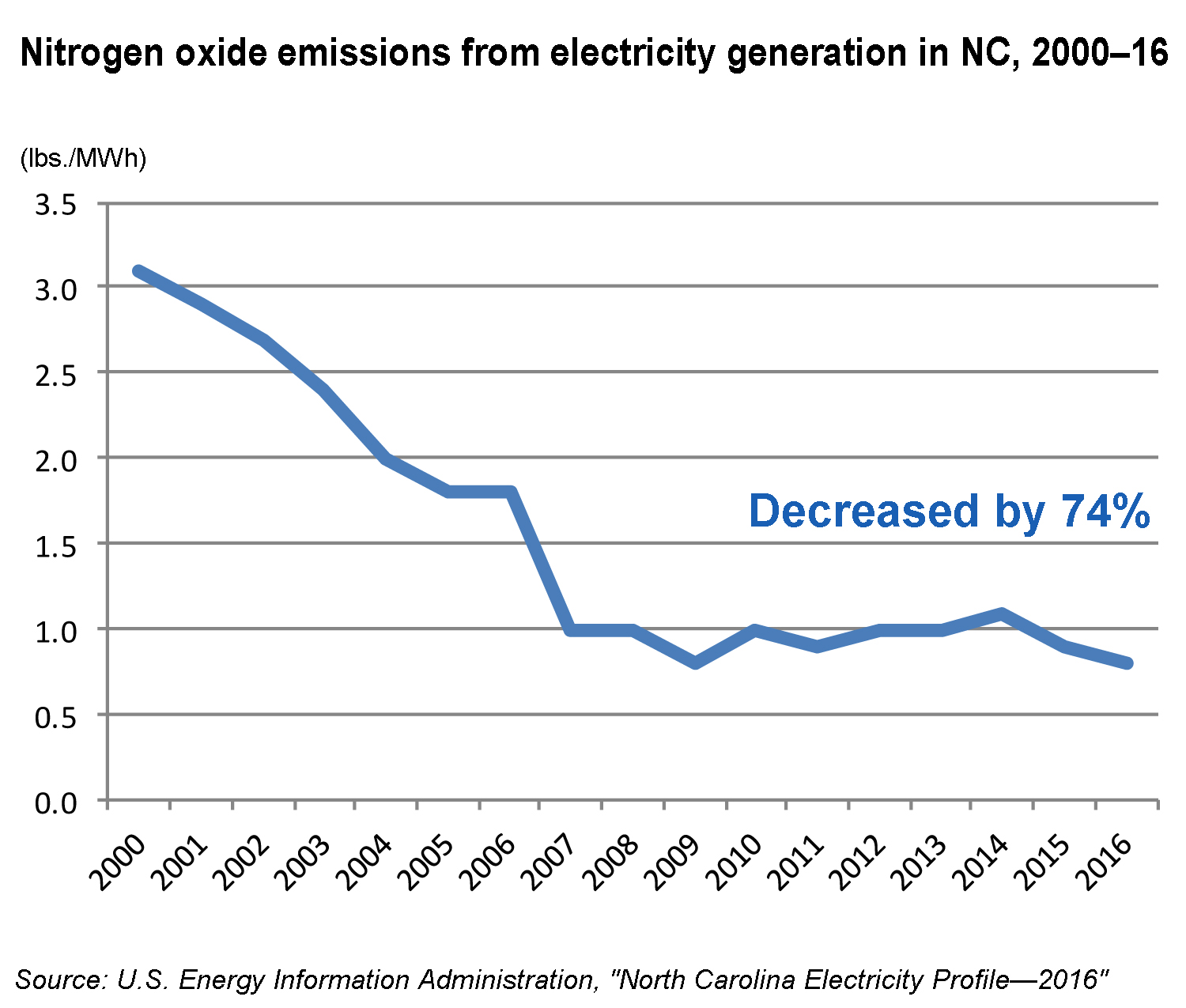
These charts should be welcome news to people worried about emissions. But in order to be that, they’d first have to be news. Most people are under the impression that emissions are getting worse, out of control, an existential crisis. That’s the drumbeat we hear hourly from media, celebrity activists, leftists, green crony industries, and many politicians.
Few know that the United States and 34 other nations have accomplished what was previously (and obviously is still) thought impossible: the “decoupling” of emissions from GDP growth, overturning the conventional thinking that economic growth necessarily required a tradeoff of environmental health.
Here’s why: The reasons energy-based emissions have been falling all century in North Carolina and the U.S. are market-oriented, not government-driven:
- Technological change drives ever more efficient use of resources
- Consumer preferences favor less “carbon-intensive” goods and services
- An expanding service sector also results in lower emissions
- The fracking revolution has made clean-burning natural gas more price-competitive with coal, and electric utilities have increasingly opted for gas as a fuel source (and the other major market competitor with coal is nuclear, which has no emissions)
